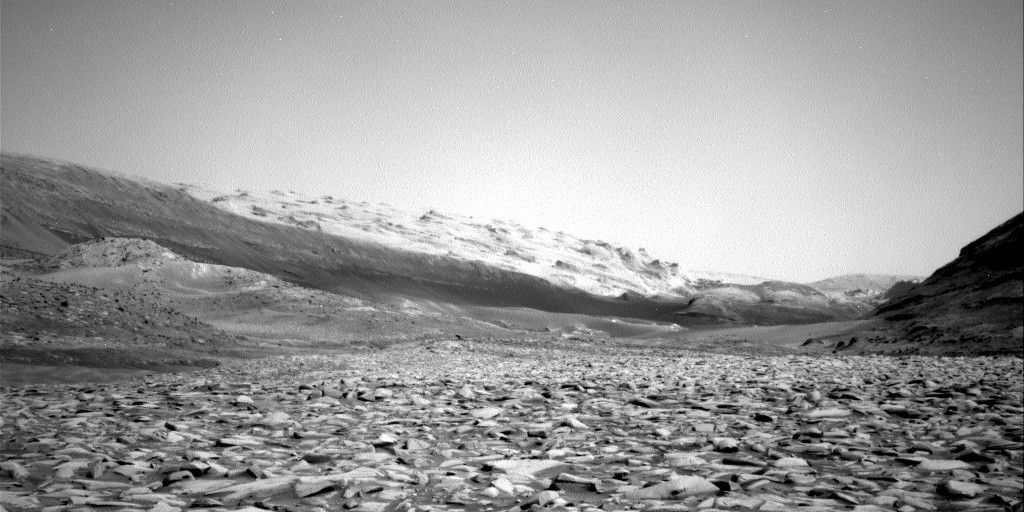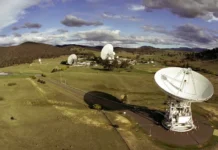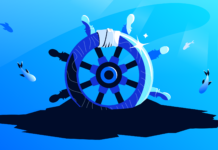Contact Science Resumes with Curiosity Rover on Mars
In an exciting development for Mars exploration, the Curiosity rover is back to conducting contact science operations. This update comes from the rover’s journey through the Martian surface during sols 4345 to 4347, which corresponds to Earth dates from October 25 to 27, 2024. These operations are part of the Mars Science Laboratory mission, which aims to investigate Mars’ climate and geology, assess whether the Gale Crater has ever offered environmental conditions favorable for microbial life, and conduct planetary habitability studies in preparation for future human exploration.
On October 24, 2024, Curiosity’s Right Navigation Camera captured an intriguing image of the Martian landscape, showcasing a wide plain strewn with sharp rocks and distant hills. This image helps scientists back on Earth plan the rover’s next movements and scientific investigations.
Navigating the Martian Terrain
Planning for the rover’s activities involves meticulous coordination. On this occasion, a change in plans allowed the rover to move its drive a sol earlier, meaning Curiosity traveled about 18 meters (approximately 59 feet) further along the western edge of Gediz Vallis. This move was made possible because the team received all the necessary data, including confirmation that one of Curiosity’s wheels was perched on a rock. Fortunately, it was deemed safe to proceed with the full suite of contact science activities planned for the weekend.
Contact science refers to the rover’s ability to analyze the Martian surface directly by using its instruments to study rocks and soil. For this weekend, Curiosity focused on two targets named "Mount Brewer" and "Reef Lake," both situated on the same geological block.
Remote Imaging and Environmental Science
Beyond the contact science, Curiosity’s three sols on Mars were packed with remote imaging tasks. The first two sols involved targeted science, which requires precise imaging of specific areas in the rover’s immediate surroundings. After driving away on the second sol, the rover spent the final sol on untargeted science, which does not require knowing its exact location beforehand.
The environmental team, or ENV, plays a crucial role in these activities. They conduct various observations to understand Martian weather patterns, such as the movement of dust and clouds. The weekend plan kicked off with two environmental activities: a dust devil movie and a suprahorizon cloud movie. Dust devils are small whirlwind phenomena that can lift dust off the Martian surface. By targeting specific sandy areas in the southeast, the team hopes to catch dust activity in the act.
Geology and Atmospheric Observations
The geology team, often referred to as GEO, focuses on ChemCam observations of targets like Reef Lake and "Poison Meadow." ChemCam, short for Chemistry and Camera complex, is an instrument that uses laser-induced breakdown spectroscopy to study the composition of Martian rocks and soil. Mastcam, another instrument, supplements these observations with its own imaging capabilities.
An interesting part of this plan included a late evening Mastcam mosaic of "Fascination Turret," a section of Gediz Vallis ridge previously observed by Curiosity. This mosaic helps scientists examine the geological formations in greater detail and understand the historical processes that shaped them.
Driving and Science Integration
Curiosity drove approximately 25 meters (about 82 feet) on the second sol. Before this drive, the rover engaged in another hour of scientific investigations. ChemCam and Mastcam worked together to observe "Heaven Lake" and the upper Gediz Vallis ridge. The ENV team also conducted line-of-sight observations to measure the dust levels in a crater and captured a pre-drive deck monitoring image to assess any dust movement on the rover due to driving or wind.
The final sol of the weekend featured a special ChemCam activity where the AEGIS (Autonomous Exploration for Gathering Increased Science) system autonomously selected a target for imaging. This was followed by a passive sky observation to monitor changes in atmospheric gases, thus enhancing our understanding of Martian atmospheric dynamics.
Wrapping Up the Weekend
The weekend activities concluded with the anticipated morning ENV block, which included two cloud movies, another line-of-sight observation, and a tau observation to determine the dustiness of the atmosphere. Tau is a measurement of optical depth, indicating how much sunlight is blocked by atmospheric particles.
Understanding the Significance
The resumption of contact science is a significant milestone in the mission, providing valuable data that not only enriches our understanding of Mars but also aids in preparing for future human missions. The ability to analyze Martian rocks and soil directly allows scientists to piece together the planet’s geological history, offering clues about its past environments and potential habitability.
Additional Insights
The Curiosity rover is an integral part of NASA’s ongoing efforts to explore Mars. With its suite of scientific instruments, Curiosity continues to be a workhorse for planetary science. It has provided invaluable insights into the Red Planet since its landing in 2012. The rover’s mission has exceeded its initial goals, and it continues to make groundbreaking discoveries about Mars’ past and present.
For those interested in keeping up with these developments, NASA provides regular updates on the rover’s activities, including detailed descriptions of its scientific findings and images captured from the Martian surface. These updates are available on NASA’s official website, offering a window into the ongoing exploration of Mars.
Conclusion
The return to contact science operations with the Curiosity rover marks another chapter in humanity’s quest to explore and understand Mars. Each discovery brings us closer to unraveling the mysteries of the Red Planet, paving the way for future exploration and potential human settlement. As Curiosity continues its journey across the Martian landscape, it carries with it the hopes and dreams of scientists and explorers worldwide, pushing the boundaries of what we know and what is possible.
For more Information, Refer to this article.


































